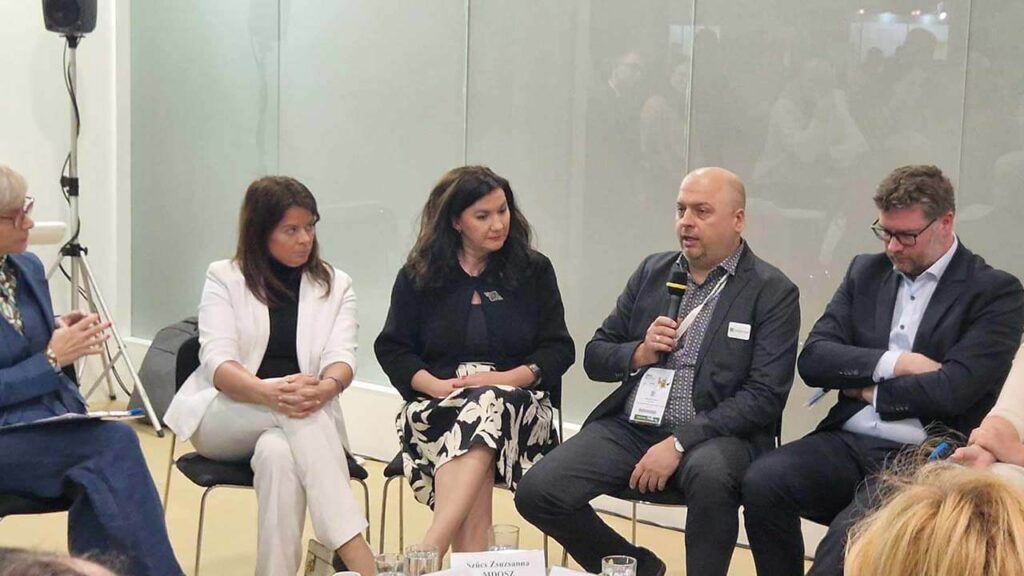
Free-from foods and alternatives in nutrition – round table discussion at SIRHA
We would be happy to say that the round table discussion on “Free-From Foods and Alternatives in Nutrition”, organised by the Ministry of Agriculture and held at the SIRHA exhibition, has found a solution for the naming, packaging and labelling of plant-based products, but it has not yet put an end to the biggest debate of recent years. However, the discussion between participants representing a wide range of sectors and organisations made it very clear that there are many aspects to be taken into account and that finding common ground is not an easy task.
The participants of the round table discussion were:
- Ildikó Balázs, Auchan, Co-President of the National Trade Association
- Attila Csorbai, Poultry Products Council, President
- Zoltán Fekete, Hungarian Brand Association, Secretary General
- dr. Beáta Felkai, Ministry of Agriculture, Deputy State Secretary
- Zoltán Harcz, Milk Interbranch Organisation and Product Council, Managing Director
- István Miskolczi, National Association of Plant-Based Food Producers and Distributors, Executive Director (NEGYOSZ)
- Dr György Pleva, Nébih, Director
- Zsuzsanna Szűcs, National Association of Hungarian Dieticians, President (MDOSZ)
- Attila Vörös, Association of Responsible Food Producers (FÉSZ), Executive Director
The main topics were product naming, consumer education, VAT and VAT reductions, and store placements. Our summary brings together the key ideas and points made.
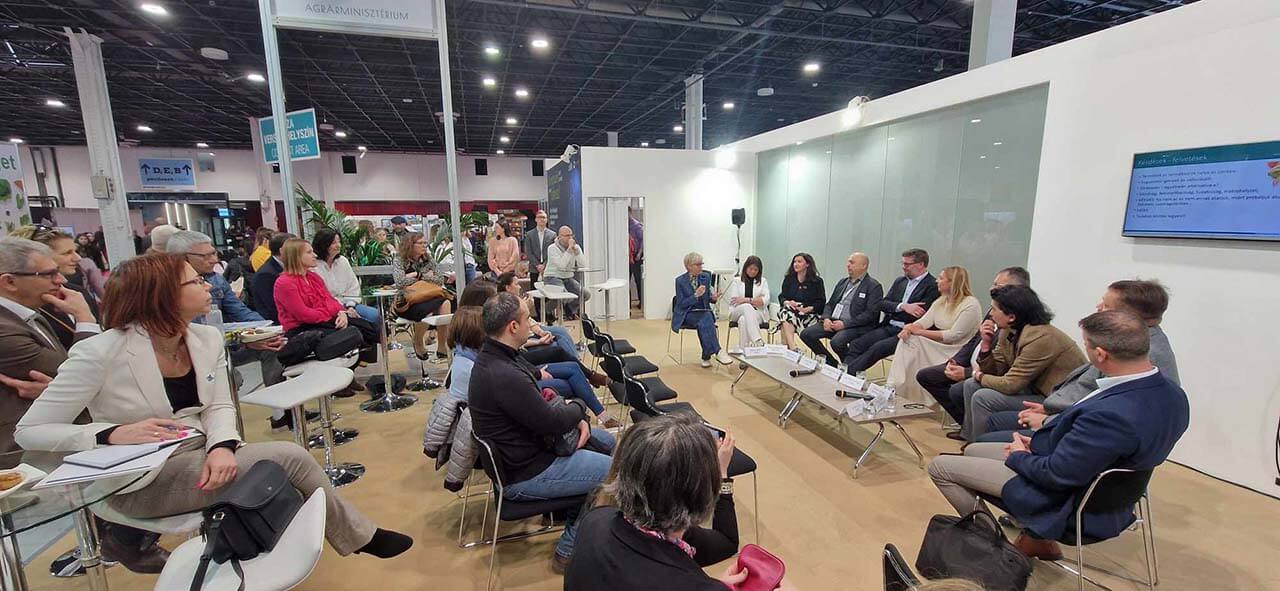
Alternative, imitation, substitute – What do I call you?
After the introduction by Beáta Felkai, Attila Vörös took the floor first. He explained that in Hungary we are at the alternative stage in the evolution of the naming of plant-based foods and free-from products, but there have been others. It is not easy to come up with one that suits everyone, because we are not talking about one category. There are foods with 100% original animal protein at one end of the spectrum and 100% plant ingredients at the other end of the spectrum. Almost anything can be created on this slider by responding to consumer needs. There are the imitation solutions, these are typically cheaper, and there are the innovative products. It is important to see that there is no single definition for all of these and that there is no confusion between the many different functionalities of the products on the market.
As regards naming, several of those present suggested that the Hungarian Academy of Sciences should also address this, as it is an active language issue. The manufacturers and the various organizations and the ministry can try to legislate, but in the meantime there is a reality out there. Our living language. When we go into a coffee shop, the colloquial usage is that we are asked if we want vegetable milk in our coffee.
According to Zoltán Harcz, we are in an easy position, as EU law, domestic law and even an EU court ruling confirms that milk, butter, cheese, yoghurt and other terms are products of animal origin, derived from cows. According to him, the Hungarian dairy industry has reached the point where it sees that there is another industry, the producers and consumers of plant-based foods. He says it has become mutually accepted and there are even producers who offer both types of products. The problem, he says, is with the creative marketers who put plant-based drinks on the shelves of Hungarian shops and call them, for example, mylk or mlik. He considers these products to be misleading, especially for people with milk protein or lactose intolerance, who can have serious health problems if the two products are confused. He says the dairy industry is very creative, producing 500 to 1000 different dairy products, including lactose-free versions.
Gabriella Jakupcsek added, with a consumer’s eye, that she herself reads the word “gyros” as “fast” (note: “gyors” means fast in Hungarian). Since we know that most consumers make their decision to buy a product in 1 second, it is really important that the name is not misunderstood.
Ildikó Balázs, representing the retail sector, said that their task is to ensure that the retail sector responds to consumer needs and focuses on consumer habits. Until there is good regulation, the opportunities in the battle for consumers are limitless, and a lot really depends on the creativity of marketers. What needs to be recognised now is that consumers are enthusiastic about plant-based products. These types of product categories are seeing double-digit growth in sales year on year. There is a clear consumer demand and retailers need to respond to that demand.
A recent market survey showed that 78% of 1000 households surveyed use some form of plant-based food as a substitute. This is a huge number. And 58% said they were open to trying this type of product. How these are labelled by manufacturers will be the result of a collective reflection.
said Ildikó Balázs, Co-President of the National Trade Association
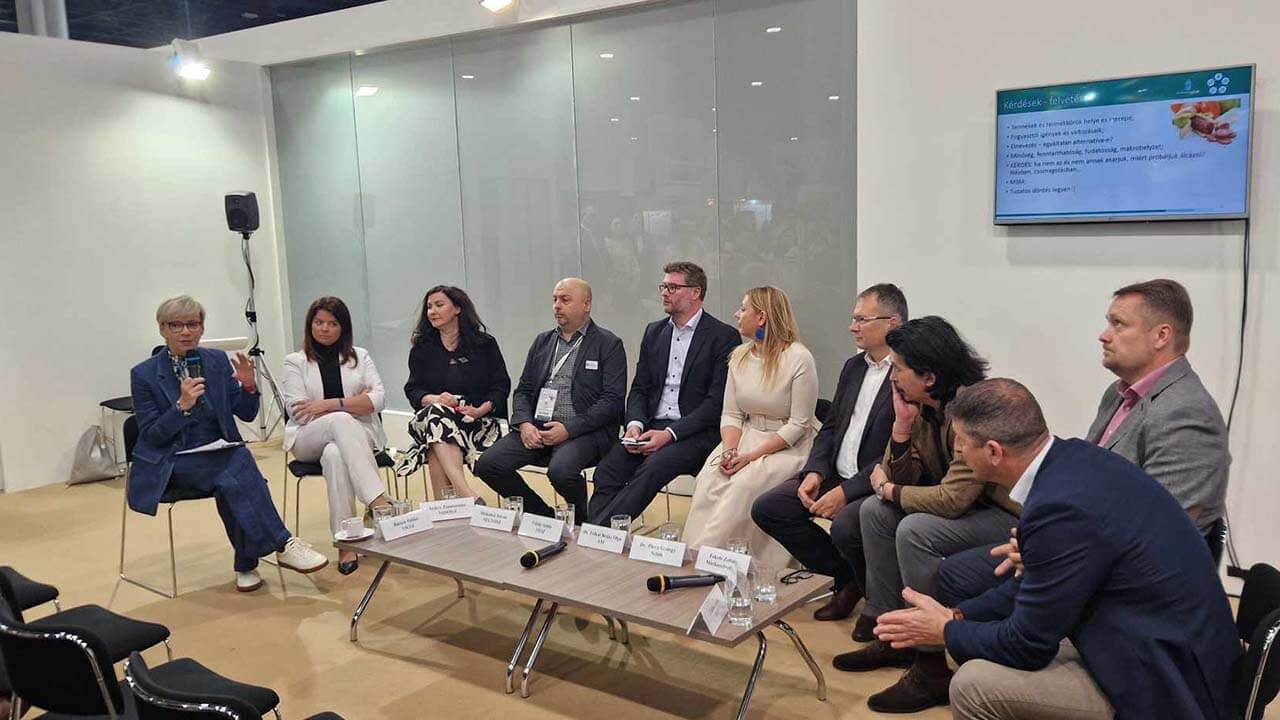
István Miskolczi, representing NÉGYOSZ, approached the topic from two sides. The first is professional, because in 2023, the Faculty of Food Engineering of the University of Szeged conducted a research, where they did not ask consumers, but they wanted to know the opinion of food engineers. In their circles, substitute and replacement terms became desirable. Among the participants in the study, those working in the food industry were against the words alternative and imitation.
The other approach is that a national representative survey was also carried out by NÉGYOSZ at the end of 2023, and the data showed that 13% of the Hungarian population declared themselves as flexitarians, about 2% as vegetarians and 1% as vegans. The survey questions were aligned with the EU survey questions, so the results are comparable. It shows that the proportion of flexitarians in the EU is 27%, and that the proportion of vegans and vegetarians there is about double that of Hungarian respondents. István’s opinion is that Hungary is always behind in these consumer habits, but will follow the European trends, so we can definitely expect progress in this area.
According to György Pleva, imitation is a degrading term. Substitute and substitute are also negative, because they mean that something is not there, so it has to be replaced or substituted. While alternative means a choice between different products. The word imitation, on the other hand, implies offering the consumer the same option while being able to take into account his or her health or conscience. Nébih said it welcomes the inspections and the notifications from the stakeholders. It is their job to monitor this market and to report to the authorities when all is not well.
Zsuzsanna Szűcs stressed the importance of the consumer aspect from a dietetic point of view. It is important to pay attention to how the consumer puts the product on his plate, and this could be a good starting point for the choice of the name.
She also reflected on the word flexitarian. There are some people who define themselves very strongly in terms of eating animal or plant products, and there is a wide range of people who consume these products in parallel. As a dietician, she believes it is important that the consumer knows what the consequences are, for example in terms of nutrient intake. Although the market for plant foods is very innovative and manufacturers are clearly trying to represent the nutrients in these products, it is very important that the consumer knows that if they are omitting animal products from their diet, they need to know what nutrients they should be getting from a source that is readily available to avoid deficiencies. This could be through fortified foods or even supplements.
According to István Miskolczi, plant-based products are not an alternative in terms of nutrient content, but when it comes to functionality, e.g. when you put a plant-based drink in your coffee, they are. He mentioned MDOSZ’s Smart Plate, which means that you do not need to be a dietician to keep track of which nutrient type you can cover with what and what you can substitute it with.
According to Zoltán Fekete, it is a political, business policy regulatory question whether we should call a spade a spade or invent something new. They represent branded products based on innovation, and they really don’t like the term imitation. They think the scale is that there is the imitation, there is the traditional product in the middle and there is the innovative product at the other end of the scale. They do not support imitation, but they do support innovation.
Markings, pictograms
Gabriella Jakupcsek summarised that linguists have an important role to play in this, but buyers do not differentiate on the basis of language. And this is where marketing comes in: the similarity of packaging and the pictogram, the marking. If we assume that there will be a generation that will now navigate the world through markings and pictograms, it may not be a similar foreign language word, but markings that will be needed. But how much confusion does the consumer have about the packaging of products? How do they know what the product is good for and what it is not? Who is it for and who is it not for? Do we even call such cases misleading, intentionally or unintentionally?
According to Beáta Felkai, labels and pictograms are indeed important, but many are already developed and in use. There are so many pictograms on a product that it has no added value. The trademark user should also think about what to put on the packaging from the available markings. In addition, consumers often do not know what a certification mark with something extra behind it means.
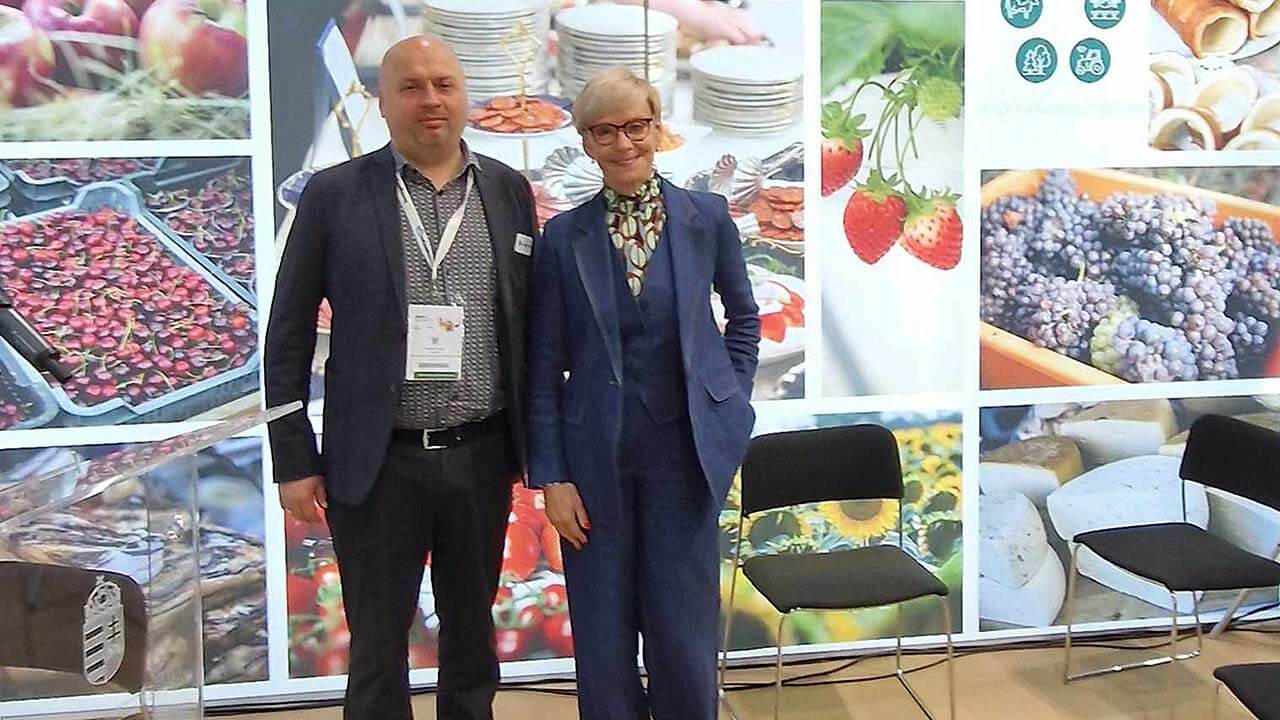
Can the consumer be educated?
However, in addition to the debate on names and pictograms, which includes various aspects, the industry also has a great responsibility to inform and educate consumers, which is not an easy task.
Zsuzsanna Szűcs said: “We want to convey everything that is important, but research shows that one in two Hungarians have great difficulty in processing, contextualising and applying nutrition information. We expect too much of the consumer, we expect them to be aware of the exact concepts, while basic school education does not give children and adults a clue about what protein is, what fat is, and that cottage cheese is a dairy product. We start from such a difficult level of communication and we want to expect the consumer to look at all the information on the label, interpret it and make a good choice.
Attila Csorbai savoured the term ‘conscious consumer’. Is there such a thing? Do we consider a society that does not know what protein, fat or carbohydrate is, but we think it will know the difference between animal protein and vegetable protein? This should be made clear. Once we have that basis, it makes sense to educate the consumer when they know what the different product groups do.
György Pleva throws in the concept of the conscious shopper. 1 out of 10 consumers are aware, but 2 out of 10 buyers are aware. Those who shop for their family take the responsibility to provide for them within the family’s budget, but in a healthy way, while keeping everyone comfortable. On the question of names and pictograms, he believes that these products have a name and that this is the best information. He cited the example of chocolate, where they try to replace the precious cocoa butter with coconut oil or palm oil, with the result that we do not get the same product, but something that resembles it.
According to István Miskolczi, front labelling in European food regulation is a hornets’ nest, with countries and industries fighting each other. However, for plant-based foods, there are some labels and trademarks that people who follow this type of diet can look at and distinguish whether it is vegan, vegetarian, etc. Anyone who is involved in this knows. But general consumer awareness is not to be expected. To address this, we should go towards reforming education, which can take decades to make a significant difference. But this problem should be solved this year. The solution could be a simple explanation, similar to a Smart Plate, that ‘dear consumer, if you eat these, you are eating well’.
The other side of the coin is that we tend to think that consumers don’t know. But in Nébih’s research “Imitates from the consumer’s point of view: help or deception?“, when asked to identify which imitation and which alternative, over 80-90% of respondents were able to correctly identify the plant-based ones. For the imitates the proportion was lousy, they couldn’t tell the difference, but for plant-based foods the proportion was good, and this implies an awareness that although they don’t quite know what is what, they know that they won’t buy this product because it’s made from soya and they’ll buy that because it’s made from meat – or vice versa.
highlighted István.
So we want the consumer to read and understand the label. But for those who haven’t tried it, try going shopping, buying only herbal products and reading all the labels in the store. Istvan has been doing this for 8 years and his shopping is very long. But the allergens are highlighted, you only have to look at those highlighted parts and you can almost tell if the product is plant based, except for meat products.
According to Attila Vörös, they all agree on the need to be informed consumers. There are very good initiatives with the Nébih to at least make consumers look at the ‘best before’ time. And if they have looked at it, they know the difference between the best-before date and the best-before date. This would be basic, and while it still needs to be developed, it is a very distant goal to make consumers make an informed choice. The buying situation is inherently disadvantageous. You know from your own example that you start turning the ketchup bottle at home during dinner, because that is when you have time to look at it.
The question of prices, VAT and special taxes
Zoltán Fekete stressed that there is one relatively simple, decisive aspect that goes into this one-second purchase decision, and that is price.2-3 years ago, vegetable drinks were typically between HUF 599-699, and milk between HUF 249-279 (ESL, UHT). Then came the food inflation of 43-51%, prices stagnated, but the price difference is still a pretty good indication to the consumer of which is traditional and which is innovative. If we are constantly talking about sustainability and what is good for the consumer, and thinking in terms of denominations and pictograms, then perhaps it would also be worth considering whether it is justified that Hungary is one of the six EU Member States with higher VAT on plant-based drinks than on milk.
Innovative products are at a double disadvantage, pulling in a modern direction, but in some cases they also pay a public health product tax on top of the higher VAT, compared to all other products on the shelf.
added Attila Vörös.
Store placement: separately or side by side?
Gabriella Jakupcsek summarized in her presentation that the participants agreed that there is a serious educational issue, which is also caused by the consumer demand, which needs to be served. But what about product placement? The average consumer walks into a store and it is a huge help to them to go left or right. Should cow’s milk and vegetable drinks be next to each other, for example, or well separated?
Ildikó Balázs, representing Auchan, said that about 30 years ago, products were created to replace cheaper raw materials (e.g. Frissföl) and were placed alongside sour cream or imitation cheese. They started out as a commercial response to a consumer need. The dairy industry was creative in producing alternative foods that had the sensory properties to replace these foods.
On the topic of information and education, Ildikó also added that young people and women shoppers are very strongly encouraged on social media. Women are the ones who do most of the shopping, they are the ones who control the family budget and decide what to take home. Education is a very important issue, because if it is done well, wherever you put that plant-based product, the consumer will look for it in the shop. The experience has been that stores have very different ways of displaying products, and there is no rule for that. Auchan is also testing, testing where it can get more traffic, how it can find the consumer better, because people who are looking for these products will certainly go to that shelf. To date, fresh cream is next to sour cream, imitation cheese is next to cheese, but free food is a separate section in each retail chain. It is worth segmenting these categories.
However, Ildikó represents the larger retailers, but in the corner shop there is no possibility to have a separate corner, a separate counter for the different product categories. It is possible to come up with a recommendation, but its feasibility varies. And that’s not even mentioning online retailing.
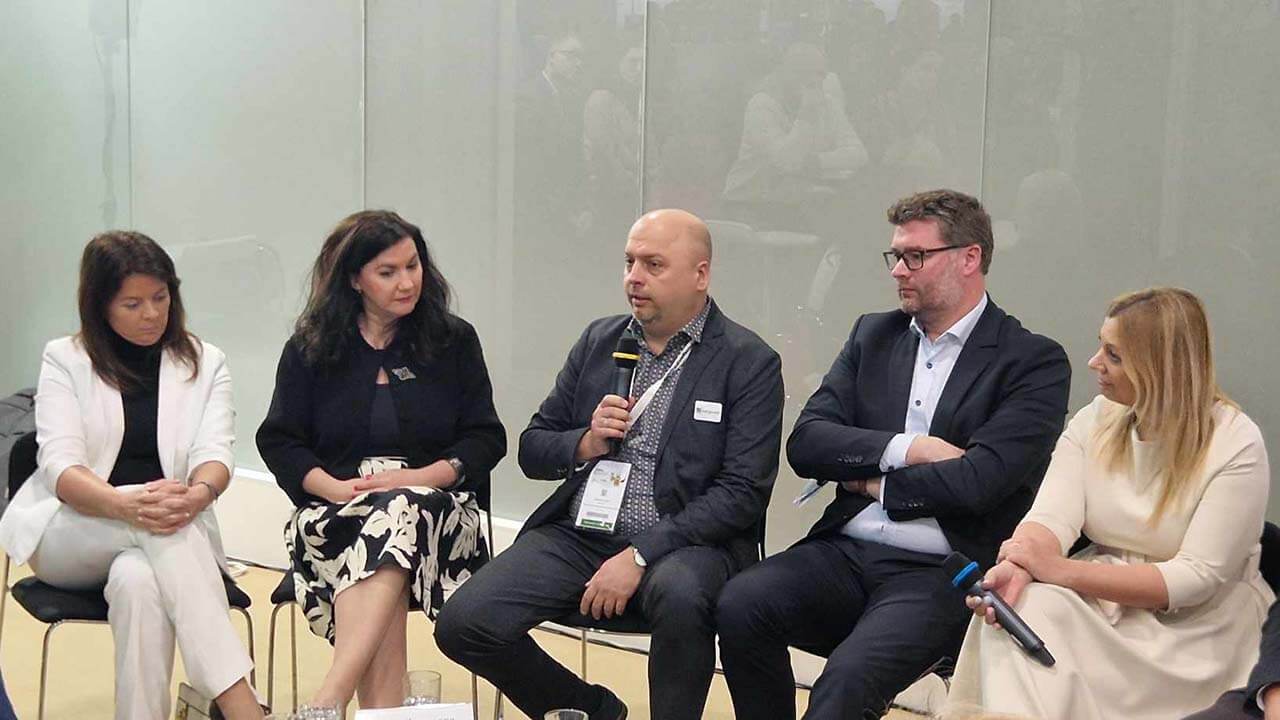
Domestic and international product range
István Miskolczi pointed out that in Germany the share of flexitarians was 40% in last year’s survey, with the Netherlands second with 37%. If this kind of change starts to happen in our country, it will be a much more difficult issue, as plant-based foods will not occupy 4 places in the retail unit. As NÉGYOSZ is the advocacy organisation for domestic plant-based food producers, he added that about 80% of the plant-based products on the shelves now are foreign products. There are no Hungarian producers in the plant-based drinks market. Good economists are calculating what the entry cost of this would be, and the calculations suggest that it probably won’t be.
Ildikó Balázs said that the review of the range is the responsibility of the trader. She tries to make the assortment from what is available on the market and the availability of Hungarian products is still quite limited. In the current economic situation, price is a key factor in consumer decisions, but it is more important now than where these products are bought from that they are on the shelf at all. Because when the consumer goes to them, they have to provide product.
Zoltán Fekete believes that branding costs a lot of money. They see that in the last 2 years the European market for plant-based products has grown by 20-21%, it’s a roughly €6 billion market, and there are a lot of new entrants. And old players are switching and doing new product lines, and start-ups have also emerged. A lot of regulatory, language policy issues are driven by business and money.
Is there good practice in the European Union?
Gabriella Jakupcsek summarised what was said. “We talked about price, naming, the real content of the products and education. They don’t stand alone, only together. By the way, are there any good examples in the European Union that are worth adopting?”
István Miskolczi replied that if you want to draw a map of the EU, the north and the south are very disconnected and the middle is doing something else again. We don’t see any correlation where we can say that, for example, Denmark or Portugal are good examples to follow. Worse still, there are conflicting decisions and actions. For example, in the Czech Republic, one week we hear about a ban on, for example, laboratory meat, and the next week we hear about how many hundreds of millions of euros they want to spend on it. At EU level, too, improvements were set, but in the end they were not implemented. These will be brought forward again at some point, because they are probably being held back for political reasons, and then we Hungarian operators will be left behind and will not be able to meet the EU level.
According to Beáta Felkai, there is no good European practice. Milk is a knitted product, and the concept of meat is defined, but not meat products. We see initiatives in some Member States, but in our country it is only in the Food Guide.
Attila Vörös says it is also a cultural issue. From the market of 26 Member States, you can generalise certain things, for example food hygiene is one of them. But it is a very interesting question what we can achieve with the is-is concepts in this country. There are some extreme creative marketing solutions, but these are the ones that go beyond certain borders and are already in breach of EU rules. So there is a general framework which is fixed and good, an official process to enforce it and to cut down the wild drives from all directions.
Summary
Beáta Felkai concluded by saying that the participants of the discussion have not found the concept they have been looking for for years, but it is obvious how much tension there is on this topic. She mentioned that it would be good to find resources for consumer education and to reduce taxes as upcoming tasks. This is a topic that needs to be discussed in a comprehensive way. It cannot be closed here and now, and all the speakers are absolutely right that, whatever the source, together they can put consumer education on the table. It is resource intensive, but it is also a question of will, and if we approach the subject from different angles, it may be more effective. He thanked the speakers for their experiences, perspectives and impulses.